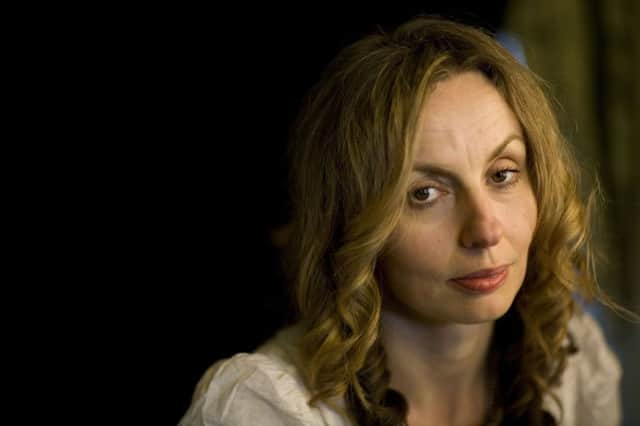Book review: Guilty Thing: A Life Of Thomas De Quincey By Frances Wilson


Guilty Thing: A Life Of Thomas De Quincey By Frances Wilson | Bloomsbury, £20
Thomas Chatterton, with whom Thomas De Quincey was fascinated, exemplifies a myth about Romanticism that De Quincey himself refuted: the young death. Chatterton, who faked the work of a medieval monk, Thomas Rowley, died in 1770 aged 17. Burns died aged 37 in 1796. Keats, Shelley and Byron died in 1821, 1822 and 1824, aged respectively 25, 29 and 36. By 1835, the older generation of Scott, Hogg, Coleridge and Hazlitt were all dead; Wordsworth, whom De Quincey idolised and vilified, lived on till 1850, but had been creatively dead since 1819. De Quincey, whose poverty, ill-health and laudanum addiction ought to have seen him to an early grave, managed 74 years before dying, in Edinburgh, in 1859.
Advertisement
Hide AdDe Quincey is a figure of infuriating brilliance, and any book which draws readers to him should be commended. With The Confessions Of An English Opium-Eater and its sequel Suspiria De Profundis he created not just addiction memoir but psychogeography, influencing Poe, Baudelaire, Stevenson, Aragon, Borges and Burroughs. Recollections Of The Lake Poets was a new form of biography: indiscreet, informed, self-conscious, waspish and awe-struck – a far cry from his contemporary Edward Trelawny’s more hagiographic reminiscences of Byron and Shelley. He developed a new kind of Shakespeare criticism in an age of great Shakespeare critics – including another betrayed hero of his in Coleridge – with “On The Knocking At The Gate In Macbeth”; with “On Murder Considered As One Of The Fine Arts” he formed “true crime” as a genre and the idea of the murderer as artist that rings down to such characters as Lafcadio in Gide’s The Vatican Cellars and Patrick Bateman in Easton Ellis’s American Psycho.
Frances Wilson notes in the prelude to her book that “there have been several fine biographies of De Quincey, but so far no De Quinceyan biography”. In attempting to forge such a thing, she does not go for his style – scientifically specific and dreamily vague, orotund, ornate, whispery, reedy and needy – nor can she flourish up some unexpectedly toothsome and tactless piece of gossip, the way he would have had he known her. She instead opts for a sort of thematic biography, teasing out and tracing through some of his obsessions. The principal form of this is the double: the subject is “to be hunted out through all his doubles”, as De Quincey writes in Some Thoughts On Biography (albeit as the method he chooses not to employ). In terms of hunting doubles, Wilson does a splendid job: from the youthful De Quincey running away as a schoolboy with a 40 guinea note sent to him in error and addressed to a different “Monsieur Monsieur De Quincey”, to his capacity to subsume his own personality into those of his one-time paragons, to the mysterious “Walking Stewart” who seems to bilocate or triplicate himself, to his name-changing (XYZ for publication, TE Manners-Ellis for the bailiffs), to his own transformation into a literary character in Blackwood’s Magazine; De Quincey is a man so refracted as to seem like that science-fiction standard trope, the man who realises he is the clone, not the original.
In pursuing this line of engagement, some material must be omitted. There is no space for De Quincey writing on German metaphysics, Joan of Arc, the Opium Wars, Alexander Pope, the Great Disruption, Swedenborg or duelling. It comes, however, with a benefit. There is a clarity about the constellation of words – abyss, crocodile, staircase, echo, absence, sphinx – that do toll throughout his work. The material on De Quincey’s fascination with female children he failed to save – from his own sister, to a prostitute who was kind to him as a runaway, to Wordsworth’s daughter who possibly had Down’s Syndrome – is telling.
But in this it is all the more surprising that there is nothing on De Quincey’s role in the Walladmor affair. Walladmor was a novel, written by Willibald Alexis, which purported to be by Sir Walter Scott, or, as he was then known, The Great Unknown. De Quincey helped in, as he called it, “the boldest hoax of our times”. It links him to Chatterton and fakery; it shows him, once again, as the doppelganger of a ghost, it reveals how snide he could be – his parodies of Scott are pricelessly cruel – and how desperate he was, taking a job translating a book which purported to be translated from English to German in the first place. It is the perfect version of the hall of mirrors De Quincey so often tried to see his true reflection in.
Wilson’s book ought to rekindle interest in De Quincey, and that it is not overburdened with academic throat-clearing is welcome. Whatever quibbles I might have, at least this most retiring and presumptuous, dilatory and diligent, exciting and broken figure is centre stage.